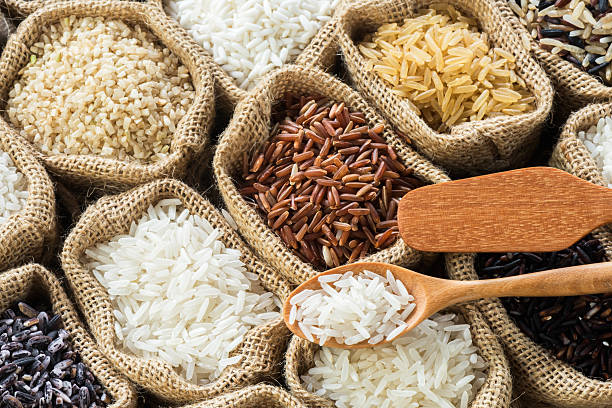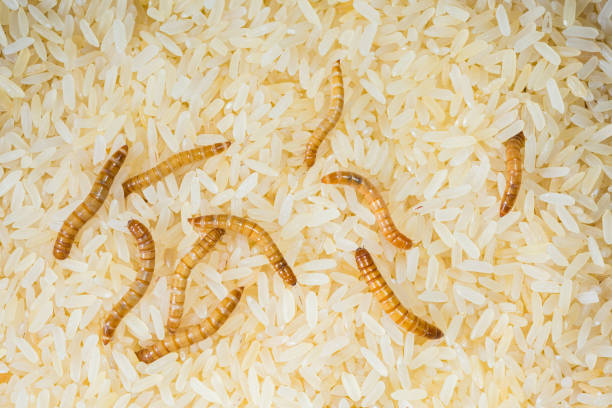A great way to stock up on a lot of reasonably priced food is to buy rice in bulk. When SHTF, you might be forced to rely on rice as well because it is a global staple that many people rely on for a reliable food source.
Maggots in rice may have been visible if you’ve ever stored rice for a long time. This raises the question of whether rice can turn into maggots. No, rice does not become maggots, to give a quick answer.
As we continue, we will discuss the question of “does rice turn into maggots” in greater detail as well as how to prevent an infestation of insects in your rice.
Does Rice Turn into Maggots?
Rice does not become infested with maggots. Many people incorrectly assume this when they see maggots in their rice because rice and maggots resemble each other in size and color. These “maggots” are actually insect larvae that hatched in the rice.
How Do Maggots Get into Rice?
Many insects consume grains like rice as food. The insects will lay their eggs on grains to make sure their young have a food source when they hatch.
Insects frequently visit grain silos or storage facilities to lay their eggs on rice. As a result, it is almost certain that the rice you purchase contains some insect eggs.
Eating these insect eggs poses no health risks. The eggs will eventually hatch, though, if the rice sits for a long enough time or if you don’t store your rice properly. This explains why your rice has maggots in it.
Types of Food Insects to Watch Out for
Maggots
Because they are not fly larvae, rice maggots are not technically considered to be maggots, but we will still refer to them as such because of how similar they appear. They are probably the larva of the common pest known as the Indian meal moth, which lays its eggs on rice.
Weevils
The small beetle known as a weevil has a protracted snout. Weevils start out as tiny, white worms, giving their larvae the appearance of a maggot. Determining which specific weevil you have in your rice is a difficult task because there are over 1,000 different types of weevils.

How to Get Rid of Maggots in Rice?
Since most grains contain some insect eggs, the eventual development of the eggs into their larvae form is all but guaranteed. When the larvae mature into adults, the adults will continue to lay eggs, typically on the grains in your pantry.
One adult can produce hundreds of eggs during their brief existence. It is very difficult to get rid of pantry pests once you have them because these eggs eventually hatch into new larvae.
To completely get rid of maggots in rice, you will need to:
• Use the rice before the eggs can hatch
• Kill the eggs in the rice before you put it in your pantry
How to Prevent Bugs in Your Rice Storage?
Refrigerate Or Freeze for 24 Hours
Long-term room temperature exposure will cause the insect eggs to hatch. Insects, like animals, must maintain a certain temperature range for the eggs to hatch. Therefore, you won’t have to worry about the eggs hatching and eating your rice or ruining your food if you chill or freeze the rice for 24 hours.
Heating
The same guidelines apply to heating, but experts disagree on the precise temperature or amount of time. Some claim that at 140 degrees, the insect eggs can be killed in as little as 15 minutes, compared to the typical range of 120 to 140 degrees for two hours.
You could also try microwaving the rice, but you must be careful not to overcook or burn it.
Boric Acid
Pests, including insects, can be deterred by using boric acid or boric powder. However, if you eat too much of it, it is poisonous. You can sprinkle it inside cabinets to help keep insects away; however, do not mix it with food. It is also known as borax.
Bay Leaves/ Peppercorn
You can try a few natural remedies at home, such as peppercorns and bay leaves. Most people think they keep insects away, even though this isn’t scientifically proven. To keep other insects away, put them near and in the container with the rice.
Oxygen Absorbers
If you put oxygen absorbers in the container and seal it, the eggs won’t hatch because there won’t be enough oxygen for the insects or their eggs to survive. Oxygen absorbers are unsafe to eat, but they are easy to spot since they’re a plastic square that clearly says “do not eat.” Currently, they are found in lots of foods that are sealed, including beef jerky.
What Happens If You Eat Rice With Maggots?
Rice that contains larvae is typically safe to consume. In fact, many different species of insect larvae are very nutrient-dense and are regarded as delicacies in some cultures. There are also methods to remove the maggots before eating if you find it repulsive to consume the larvae.
Final Thoughts
Now when a friend asks you, “Does rice rot into maggots?”; you can confidently tell them “no” rice is a grain that insects lay their eggs on, which hatch and grow into insect larvae, like maggots.
Fortunately, there are a number of ways to destroy the eggs and stop them from hatching. The best practices involve either using an oxygen absorber or chilling the rice for 24 hours before storing it.
MREs are a great way to extend the shelf life of your food supply if you think rice won’t be a sufficient energy source.

